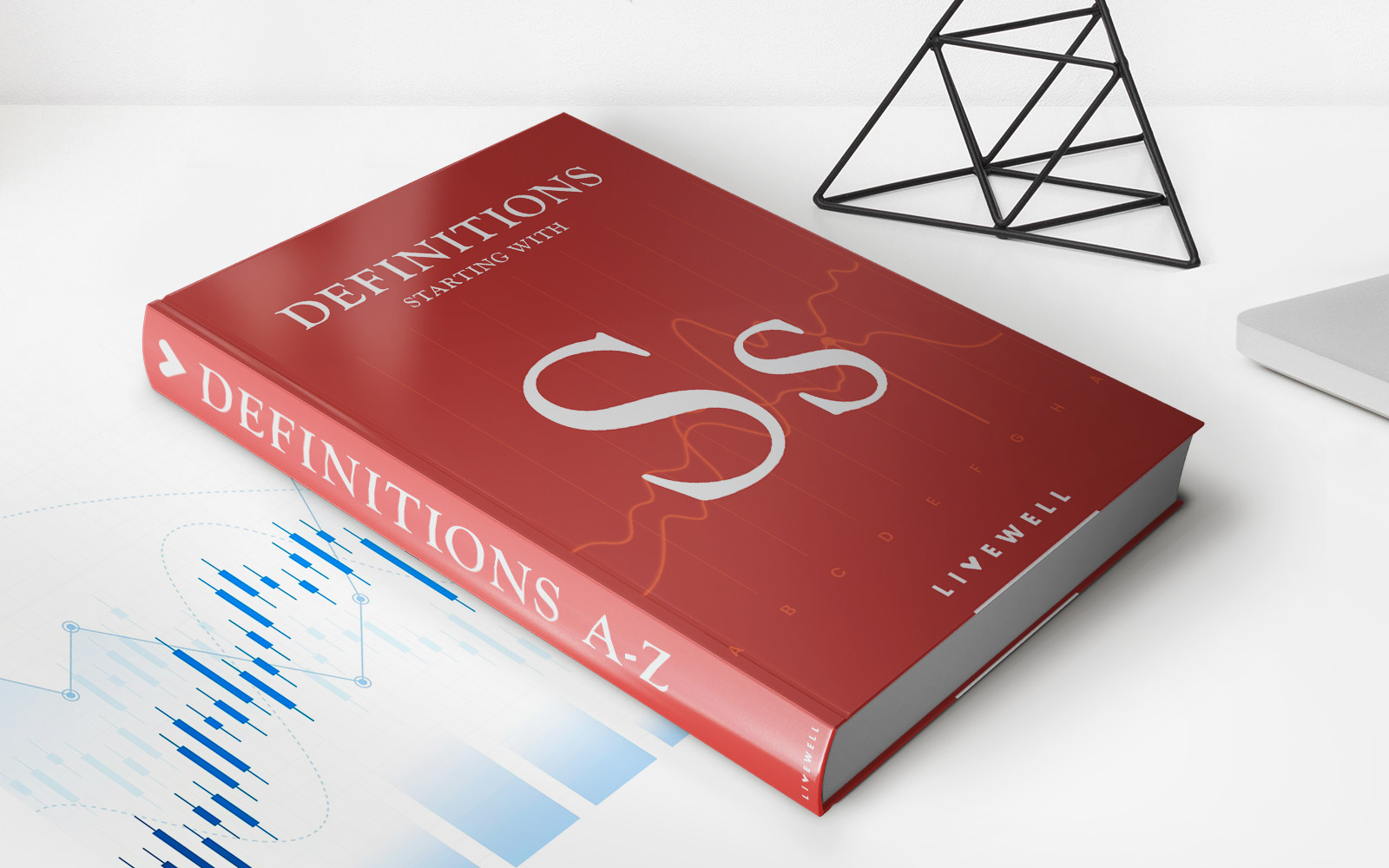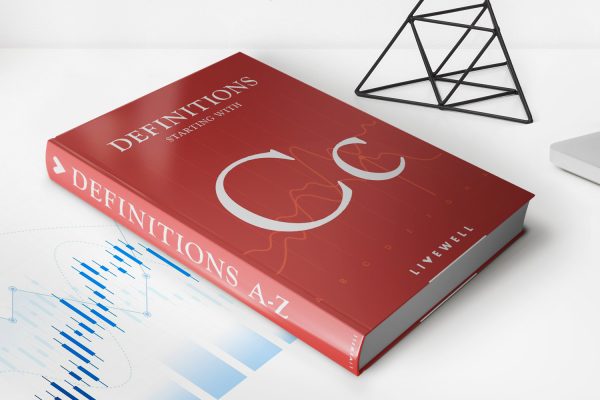Home>Finance>How Will My Pension Affect My Social Security Benefits


Finance
How Will My Pension Affect My Social Security Benefits
Published: November 24, 2023
Learn how your pension can impact your Social Security benefits and understand the financial implications for your retirement. Finance made simple.
(Many of the links in this article redirect to a specific reviewed product. Your purchase of these products through affiliate links helps to generate commission for LiveWell, at no extra cost. Learn more)
Table of Contents
- Introduction
- Understanding Pension and Social Security Benefits
- How Social Security Benefits are Calculated
- How Pension Payments Can Impact Social Security Benefits
- The Windfall Elimination Provision (WEP)
- The Government Pension Offset (GPO)
- Strategies to Maximize Pension and Social Security Benefits
- Considerations for Retirees with Pension and Social Security Benefits
- Conclusion
Introduction
Planning for retirement involves many considerations, from saving enough money to determining how your various sources of income will impact each other. One common concern is how your pension will affect your Social Security benefits. Understanding the relationship between these two sources of income is essential for making informed decisions about your retirement planning.
A pension is a retirement plan offered by an employer that provides regular income to employees after they retire. Social Security benefits, on the other hand, are provided by the government and are intended to provide a safety net in retirement. Both pensions and Social Security benefits play a crucial role in ensuring financial security during your golden years.
It’s important to note that Social Security benefits are calculated based on your earnings history and the age at which you start receiving benefits. The amount you receive from your pension may not directly impact your Social Security benefits. However, certain rules and provisions do exist that can affect the amount of your Social Security benefits if you have a pension.
In this article, we will dive deeper into the relationship between your pension and Social Security benefits. We will explore how Social Security benefits are calculated, how pension payments can impact those benefits, and the significance of provisions such as the Windfall Elimination Provision (WEP) and the Government Pension Offset (GPO). Moreover, we will discuss strategies to maximize your pension and Social Security benefits while considering the factors specific to retirees with both pension and Social Security income streams.
By better understanding the interaction between your pension and Social Security benefits, you can make informed decisions that optimize your retirement income and ensure financial stability throughout your golden years. Let’s delve into the details of how these two sources of income work together and how you can maximize your benefits.
Understanding Pension and Social Security Benefits
Before delving into how your pension can impact your Social Security benefits, it’s important to have a clear understanding of what these two sources of income entail.
A pension, also known as a defined benefit plan, is a retirement plan offered by an employer. It provides regular income to employees during their retirement years. The employer contributes a portion of the employee’s salary into the pension fund, and the funds are invested to generate returns and grow over time. The employee becomes eligible to receive the pension benefits after reaching a certain age or completing a required number of years of service with the employer.
Social Security benefits, on the other hand, are administered by the Social Security Administration (SSA) and are funded through payroll taxes. These benefits are designed to provide a basic level of income to retirees, disabled individuals, and survivors of deceased workers. The amount of Social Security benefits you receive in retirement is based on your earnings history and the age at which you start receiving benefits.
Both pensions and Social Security benefits play a crucial role in providing retirement income. However, they differ in terms of their funding, eligibility criteria, and calculations. It’s important to understand how each of these sources of income works in order to make informed decisions about your retirement planning.
Your pension benefits are typically calculated based on a formula that takes into account factors such as your years of service, your average salary, and the specific pension plan provisions. The formula may vary depending on the employer and the type of pension plan. Some pension plans provide a fixed benefit amount, while others calculate the benefits based on a set formula.
It’s worth noting that the availability of pensions has become less common in recent years, with many employers transitioning to defined contribution plans, such as 401(k) accounts. In a defined contribution plan, the employer and/or the employee contribute to an individual retirement account, and the employee is responsible for managing the investments and selecting how the funds are allocated.
On the other hand, Social Security benefits are calculated based on your earnings history, specifically your highest 35 years of earnings. The Social Security Administration applies a formula to these earnings to determine your primary insurance amount (PIA), which represents the monthly benefit you would receive if you retired at full retirement age, which is typically between 66 and 67 years old, depending on your birth year.
Now that we have a better understanding of pensions and Social Security benefits as separate entities, let’s explore how these two income sources can interact with each other and the potential impact they can have on your overall retirement income.
How Social Security Benefits are Calculated
Understanding how Social Security benefits are calculated is crucial for determining the amount of income you can expect during your retirement years. The Social Security Administration uses a specific formula to calculate your benefits based on your earnings history.
The first step in calculating your Social Security benefits is to determine your Average Indexed Monthly Earnings (AIME). This is done by adjusting your past earnings for inflation, up until the year you turn 60. The formula considers the highest 35 years of your earnings and takes into account changes in average wages over time.
Once your AIME is determined, it is divided into three brackets, known as bend points. Each bend point has a corresponding percentage, which is used to calculate your primary insurance amount (PIA). Currently, the bend points are set at $926 and $5,583, as of 2021.
The PIA is calculated by applying the corresponding percentage to each bracket and summing them up. This determines the monthly benefit amount you would receive if you retire at your full retirement age (FRA), which is typically between 66 and 67 years old, depending on your birth year.
If you decide to start receiving benefits before your FRA, your monthly benefit amount will be reduced based on the number of months before your FRA you begin receiving benefits. On the other hand, if you delay receiving benefits beyond your FRA, your benefit amount will increase by a certain percentage for each year of delay, up until age 70.
It’s important to note that the maximum amount you can receive in Social Security benefits is subject to an annual cap, which can change each year due to cost-of-living adjustments. Additionally, there is a minimum benefit amount to ensure that those with low earnings still receive a basic level of income in retirement.
Calculating your Social Security benefits can be complex, and it’s advisable to use the Social Security Administration’s online calculators or consult with a financial advisor to get an accurate estimate of your benefits based on your individual circumstances.
Now that we have an understanding of how Social Security benefits are calculated, let’s explore how pension payments can impact these benefits and the provisions that come into play in such scenarios.
How Pension Payments Can Impact Social Security Benefits
The impact of pension payments on Social Security benefits depends on various factors, including the type of pension you receive and whether you have contributed to the Social Security system throughout your career. In some cases, your Social Security benefits may be reduced due to provisions such as the Windfall Elimination Provision (WEP) and the Government Pension Offset (GPO).
The Windfall Elimination Provision (WEP) affects individuals who have worked in jobs where they did not pay Social Security taxes, but instead contributed to a pension system. This provision primarily targets workers who receive a pension from work not covered by Social Security and also have enough Social Security-covered earnings to qualify for benefits.
The WEP modifies the formula used to calculate Social Security benefits for individuals subject to its provisions. It reduces the benefit amount for those with fewer years of substantial Social Security-covered earnings. The exact impact of the WEP varies depending on the number of years of substantial earnings and the amount of the pension received from non-Social Security covered employment.
The Government Pension Offset (GPO) affects individuals who receive a pension from a government job that was not covered by Social Security and are also eligible for spousal or survivor benefits based on their spouse’s Social Security record. The GPO reduces the amount of spousal or survivor benefits by two-thirds of the pension amount received from the non-Social Security covered employment.
It’s crucial to understand that the WEP and GPO provisions are designed to reduce the benefit amount to reflect the additional security provided by a pension. These provisions aim to ensure fairness in the Social Security system and prevent individuals from receiving double benefits for the same period of work.
It’s important to note that the WEP and GPO provisions can have a significant impact on your overall retirement income. They can result in a reduction or elimination of your Social Security benefits in certain cases. Therefore, it’s advisable to consult with a financial advisor or the Social Security Administration to understand how these provisions may affect your specific situation before making any retirement decisions.
Despite the potential impact of pension payments on Social Security benefits, it’s worth mentioning that not all pensions have an adverse effect. If you contributed to the Social Security system throughout your career and also receive a pension from an employer who withheld Social Security taxes, the impact on your benefits may be minimal or non-existent.
Understanding the nuances of how your pension payments can impact your Social Security benefits is critical for making informed decisions regarding retirement planning. In the next sections, we will discuss strategies to maximize your pension and Social Security benefits while considering the factors specific to retirees with both pension and Social Security income streams.
The Windfall Elimination Provision (WEP)
The Windfall Elimination Provision (WEP) is a rule established by the Social Security Administration (SSA) that affects individuals who have earned a pension from work not covered by Social Security, often referred to as non-covered employment. The purpose of the WEP is to adjust the formula used to calculate Social Security benefits for individuals who receive a pension from this non-covered employment.
The WEP primarily impacts workers who have split their careers between jobs covered by Social Security and jobs that are not. This commonly occurs when individuals work for employers such as state and local governments, foreign employers, or certain nonprofit organizations that do not participate in the Social Security system.
The WEP aims to address what is seen as an unfair advantage for individuals who receive both a pension from non-covered employment and Social Security benefits based on other covered employment. Without the WEP, these individuals would potentially receive significantly higher Social Security benefits due to the way the benefit formula is structured.
The impact of the WEP on Social Security benefits is based on the number of years of substantial earnings that an individual has under the Social Security system. Substantial earnings are determined each year by the SSA and are subject to change. The more years of substantial earnings an individual has, the less the WEP reduces their Social Security benefit amount.
The WEP adjustment is limited to a certain threshold. As of 2021, the maximum reduction amount is capped at $498 per month, but this amount is adjusted annually for inflation. It’s important to note that the WEP reduction cannot exceed one-half of the non-covered pension amount the individual receives.
It’s essential to understand that the WEP does not affect all individuals who receive a pension from non-covered employment. Certain groups, such as those who have 30 years or more of substantial earnings under Social Security or those who are eligible for Social Security benefits before 1986, may be exempt from the WEP.
To determine the impact of the WEP on your Social Security benefits, it’s advisable to use the WEP Calculator available on the Social Security Administration’s website. This tool takes into account your earnings history, including years of substantial earnings, and provides an estimate of the reduction to your Social Security benefits due to the WEP.
Understanding the Windfall Elimination Provision is crucial for individuals who have both a pension from non-covered employment and Social Security benefits. By being aware of this provision, individuals can plan their retirement and understand how their overall income may be affected. Consulting with a financial advisor or SSA representative can provide further insight into how the WEP specifically applies to your situation.
The Government Pension Offset (GPO)
The Government Pension Offset (GPO) is a provision established by the Social Security Administration (SSA) that affects individuals who receive a pension from a government job that was not covered by Social Security. The GPO adjusts the amount of spousal or survivor benefits a person is eligible to receive from Social Security based on the amount of their government pension.
The purpose of the GPO is to ensure fairness in the Social Security system and prevent individuals from receiving both a government pension and full spousal or survivor benefits based on their spouse’s Social Security record. The GPO aims to offset the benefits, as it is believed that the government pension provides a form of retirement income similar to Social Security benefits.
Under the GPO, the spousal or survivor benefits an individual is eligible to receive from Social Security are reduced by two-thirds of the amount of their government pension. This reduction applies if the individual is entitled to both Social Security benefits and a government pension from non-covered employment.
For example, if an individual receives a government pension of $1,500 per month, their Social Security spousal or survivor benefits would be reduced by $1,000 ($1,500 x 2/3). Thus, if they were eligible for a $1,200 spousal or survivor benefit, they would receive $200 from Social Security ($1,200 – $1,000), resulting in a net benefit amount of $1,700.
It’s important to note that the GPO can have a significant impact on an individual’s overall retirement income. Depending on the amount of their government pension and their eligibility for spousal or survivor benefits, the reduction imposed by the GPO could eliminate the individual’s Social Security benefits entirely.
It’s crucial to understand that the GPO does not impact an individual’s own Social Security retirement benefits earned through covered employment. The GPO only affects spousal or survivor benefits received based on a spouse’s or deceased spouse’s Social Security record.
It’s advisable for individuals who receive a government pension from non-covered employment and have potential eligibility for spousal or survivor benefits from Social Security to consult with a financial advisor or the Social Security Administration. They can provide guidance on the specific impact the GPO may have on an individual’s situation and help plan for retirement accordingly.
By understanding the Government Pension Offset and its potential impact, individuals can make informed decisions regarding their retirement income and ensure they have a comprehensive understanding of their benefits from both government pensions and Social Security.
Strategies to Maximize Pension and Social Security Benefits
Maximizing your pension and Social Security benefits is essential for ensuring a secure and comfortable retirement. While the interaction between these two sources of income can be complex, there are strategies you can employ to make the most of both.
1. Understand Your Pension Options: Take the time to understand the payout options for your pension. Some plans may offer a lump sum payout, while others provide a monthly annuity. Consider your financial goals and consult with a financial advisor to determine which option aligns best with your retirement objectives.
2. Coordinate Retirement Dates: Coordinate the timing of your pension and Social Security benefits. Delaying both can result in higher monthly amounts. Alternatively, you may choose to start taking your pension earlier and delay your Social Security benefits to maximize the eventual payout.
3. Strategic Social Security Claiming: Explore different claiming strategies for Social Security benefits. For married couples, options such as filing and suspending or using a restricted application may allow one spouse to claim spousal benefits while earning delayed retirement credits. Consult with a financial planner or use Social Security calculators to determine the most advantageous claiming strategy for your situation.
4. Consider Tax Implications: Understand the tax implications of your pension and Social Security benefits. Depending on your income level and tax brackets, you may need to plan accordingly to minimize your tax liability. Consult with a tax professional to determine the best approach for your specific circumstances.
5. Manage Other Retirement Savings: Take into account your other retirement savings, such as 401(k) or Individual Retirement Accounts (IRA), when strategizing to maximize your overall retirement income. By utilizing these savings strategically, you can potentially reduce the impact of reductions due to the Windfall Elimination Provision or Government Pension Offset.
6. Continuously Review Your Options: Regularly review your pension and Social Security statements to ensure accuracy and to evaluate any changes in rules or regulations that may affect your benefits. Stay informed about updates to rules, tax laws, and other relevant factors that may impact your retirement planning.
Remember, everyone’s financial situation is unique, so it’s crucial to consult with a financial advisor who specializes in retirement planning. They can assess your specific circumstances and provide personalized guidance on how to maximize your pension and Social Security benefits.
By implementing these strategies and understanding the nuances of both your pension and Social Security benefits, you can optimize your retirement income and enjoy a financially secure future.
Considerations for Retirees with Pension and Social Security Benefits
Retirees who have both a pension and Social Security benefits face unique considerations that can significantly impact their overall retirement planning. Understanding these considerations and taking appropriate actions can help retirees make the most of their combined income sources.
1. Budgeting and Cash Flow Management: When you have multiple sources of income, it’s crucial to create a comprehensive budget that considers both your pension and Social Security benefits. Take into account factors such as taxes, healthcare expenses, and any other retirement obligations to ensure a reliable cash flow throughout your retirement years.
2. Adjust for Inflation: Consider the impact of inflation on both your pension and Social Security benefits. While some pensions may have cost-of-living adjustments, it’s important to assess whether the increases will be sufficient to maintain your standard of living over time. Additionally, Social Security benefits receive periodic cost-of-living adjustments, but it’s advisable to have additional investments or savings to combat inflationary pressures.
3. Understand the Tax Implications: Familiarize yourself with the tax treatment of your pension and Social Security benefits. Depending on your specific circumstances, a portion of your benefits may be subject to income taxes. Consult with a tax advisor who specializes in retirement income to develop a tax-efficient strategy that minimizes your tax liability while maximizing your income.
4. Estate Planning: Consider the impact of your pension and Social Security benefits on your estate plan. Review beneficiary designations and other important estate planning documents to ensure they align with your goals and desires. Work with an estate planning attorney to optimize your plan and protect your assets for future generations.
5. Longevity and Survivorship Considerations: If you have a spouse or dependents who rely on your income, evaluate how your pension and Social Security benefits may support them in the event of your passing. Consider options such as survivor benefits and life insurance to provide financial security for your loved ones.
6. Flexibility in Retirement: Retirees with both a pension and Social Security benefits often have more flexibility in their retirement planning. Consider how you can utilize this flexibility to pursue other goals, such as part-time work, travel, or hobbies. Having multiple income sources can provide the financial stability necessary to pursue these endeavors while maintaining a comfortable retirement.
7. Financial Planning and Professional Advice: Given the complexities involved in optimizing pension and Social Security benefits, seeking the guidance of a qualified financial advisor is highly advisable. A professional can assess your specific financial situation, goals, and risk tolerance, and develop a comprehensive retirement plan that maximizes your income potential.
By considering these important factors, retirees with both pension and Social Security benefits can make informed decisions to strengthen their financial security during retirement. Assessing your retirement goals, understanding the interactions between your income sources, and seeking professional guidance can significantly enhance your retirement experience.
Conclusion
Navigating the complex relationship between your pension and Social Security benefits is crucial for maximizing your retirement income and ensuring financial stability in your golden years. Understanding how these two sources of income interact, as well as the provisions that may impact them, is key to making informed decisions when it comes to retirement planning.
The calculations and rules governing pension and Social Security benefits can be intricate, but by implementing smart strategies, you can optimize your retirement income. Consider coordinating retirement dates, exploring different claiming strategies for Social Security, and understanding tax implications to maximize your benefits.
Be mindful of provisions such as the Windfall Elimination Provision and the Government Pension Offset, as they can affect the amount of your Social Security benefits. Understanding these provisions will help you adjust your retirement plans accordingly and make the most of your pension and Social Security benefits.
Regularly reviewing your pension and Social Security statements, staying informed about changes in rules and regulations, and seeking the advice of financial professionals will ensure you make educated decisions throughout your retirement journey.
Ultimately, the goal is to create a comprehensive retirement plan that balances both your pension and Social Security benefits, along with any other retirement savings or investments. By considering all these factors, you can enjoy a fulfilling and financially secure retirement.
Remember, every individual’s financial situation is unique, so it’s essential to consult with a financial advisor who specializes in retirement planning to tailor a plan that suits your specific needs.
With careful consideration, strategic planning, and professional guidance, you can optimize your pension and Social Security benefits to create a comfortable and worry-free retirement, allowing you to focus on enjoying the fruits of your labor. Start planning today to secure a prosperous future tomorrow.














